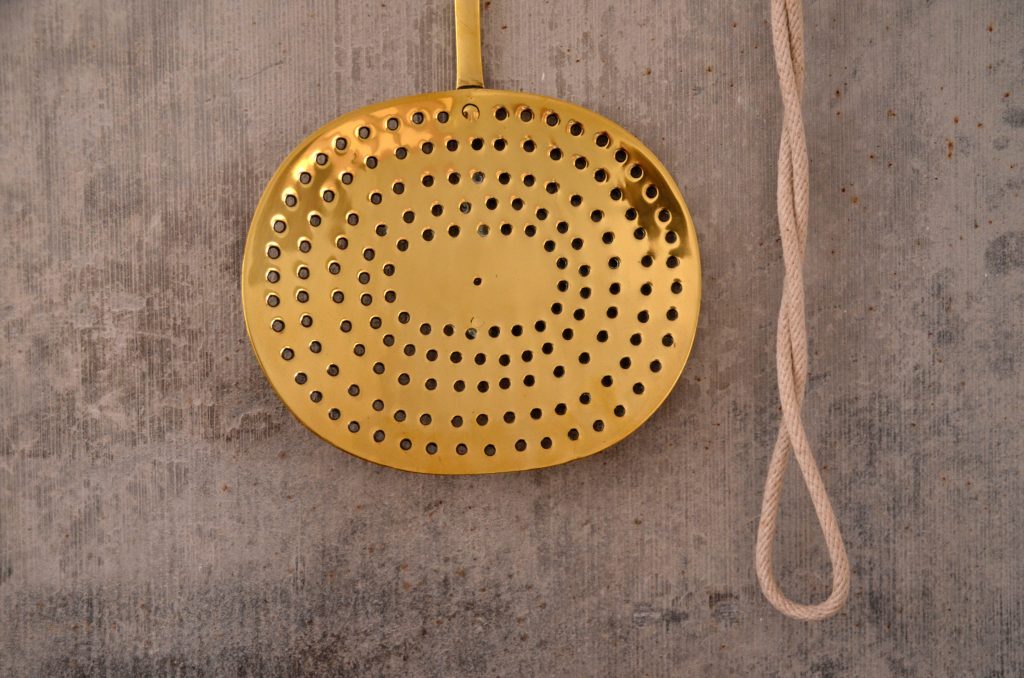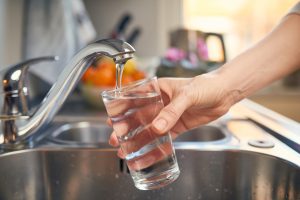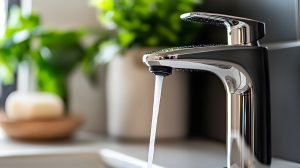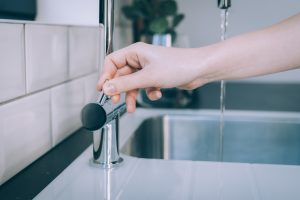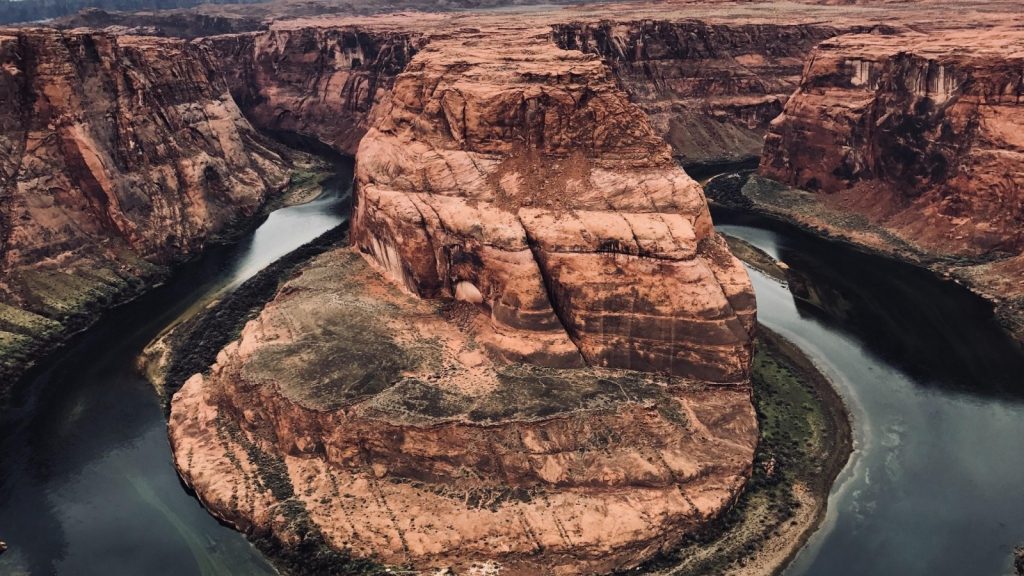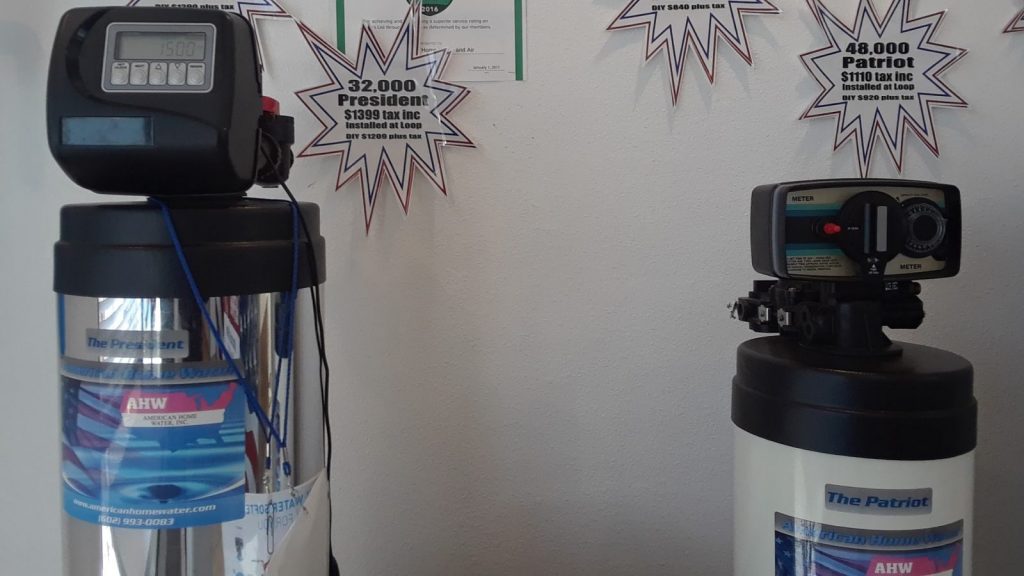Did you know that irritated skin and dull hair are side effects of continuous exposure to limescale? But wait, what is limescale to begin with? In this post, we’ll give you all the details, including how to get rid of this annoying build-up.
What Does Limescale Look Like?

You must have seen it around your house. It’s a white, chalky, but hard substance usually found on and around water spots such as toilet bowls, sinks, taps, bathroom tiles, and inside appliances like washing machines and kettles.
It’s a nasty stain that makes your house look old and neglected. Sometimes limescale can have a pink or even red-brown appearance (like rust).
This build-up is very crusty and hard to remove, which is how you can tell it apart from food or other types of build-up.
What Causes Limescale?
Limescale is composed of calcium and carbonate ions. This compound is found in hard water. It first exists as calcium bicarbonate which is then broken down to the insoluble calcium carbonate.
What’s the Difference Between Hard and Soft Water?
Hard water aka “raw water” is water rich in minerals and salts. It’s the tap water directly supplied to your house from your municipality’s water treatment plant. Calcium and magnesium ions make a huge percentage of hard water’s ion concentration.
It’s these concentrations that are responsible for the formation of limescale.
On the other hand, soft water lacks calcium and magnesium ions. It’s hard water that has been “softened” to remove the highly concentrated minerals and salts.
In other words, soft water can’t cause limescale.
If you want to learn more about the differences between hard water and soft water, check out this post.
Can Limescale Deposits Kill You?
Fortunately, limescale isn’t poisonous.
However, some medical experts suspect that continuous consumption of limescale in hard water can cause kidney stones.
Further, limescale can wreak havoc on your home via build-up on various surfaces. Here’s a quick rundown of its negative effects.
1. Ugly white and colored stains everywhere
Did you know that every year, approximately 13 kilograms of limescale precipitate and harden in your home?
You need to be more careful with water-prone places like sinks and toilets.
Limescale also has a bad habit of forming brown dirty rings in toilets and sinks. It can also clog your shower head and discolor your precious tiles. This looks horrible and can be very difficult to clean.
2. Limescale deposits destroy appliances
Limescale will form on any surface that has been exposed to hard water.
The infection is even faster in heating appliances like kettles that easily decompose the soluble calcium bicarbonate into the insoluble calcium carbonate.
Limescale build-up in appliances can reduce their efficiency by a whopping 30%! Your kettle will now require a lot of energy to heat water because of the insulating limescale layer.
Limescale can even destroy your washing machine. In addition to that, Limescale deposits will damage your cloth fibers and dull their colors.
3. Faulty showers, taps, and plumbing systems
Accumulated limescale can easily clog your showerhead holes, faucets, and plumbing systems. Layers of limescale will keep on accumulating until your pipes are completely sealed. If this happens, your only option is to unclog or replace your plumbing system (a very costly affair). Which is why you should contact American Home Water & Air’s for professional bathtub and shower repair services immediately once you notice these issues.
4. Bad skin and hair
Most people don’t know this, but hard water affects the quality of their skin and hair, as we discussed in this post.
The high concentration of minerals and salts hardens your hair and makes it dull and brittle. Limescale in hard water can also penetrate your hair and cause scalp irritation.
Limescale also clogs your skin pores. Not only does this steal the glow from your skin, but it also makes it rough, dry, and prone to skin irritation.
How to Get Rid of Limescale Deposits
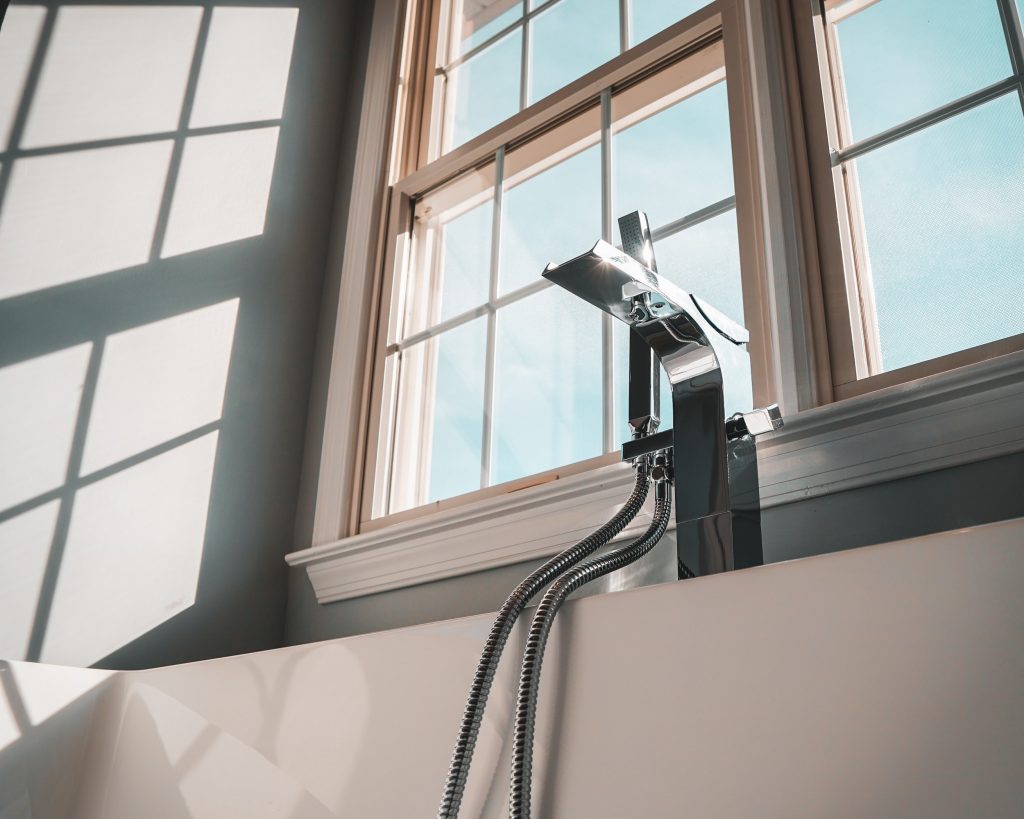
We’ll tell you everything you need to know about soft water and water softeners and how you can install one in your home to get rid of limescale.
Test Your Water
The only way to know if you need to install a water softener is to test your tap water.
Water testing will give you insight into what is dissolved in your water, such as ion concentration and information on bacteria and chemical toxins that are harmful to your body.
You can buy a water testing kit from your local water treatment store. However, it’s cheaper to check if your nearby soil and water conservation center or university offers water testing services. They will also provide more detailed results compared to simple water testing kits.
Can Water Softeners Protect You from Contaminants?
No, water softeners only remove highly concentrated minerals from tap water.
Your tap water needs to be purified before going through the water softening system. You’ll have to install a water treatment system like a Filtration or a Reverse Osmosis System to deal with harmful bacteria and parasites.
Do Water Softeners Affect Taste and Odor?
Soft water, indeed, has a slightly different taste than hard water. Soft water has a somewhat dull taste because all the mineral ions have been removed. These mineral ions are the flavor ingredients that give hard water its refreshing taste. This is all subjective, however. Some people actually prefer the taste of soft water. In our experience, it’s also quite easy to grow accustomed to.
If you really don’t like the taste, however, there’s another option. Commonly called ‘descaler systems’ in Phoenix, these units crystallize the minerals in your water as opposed to replacing them with salt.
Choosing the Best Water Softener for Your Home
We wrote all about choosing the correct size water softener here. We’ll give you a brief overview below.
First, determine the water softener’s capacity by calculating your household’s daily water usage. You can easily do this by multiplying the average water consumption of one person by the number of people in the household. If you’re ever in need of a water softener in Surprise, give us a call and we’ll help you select the right water softener for your home.
Tip: The average water consumption in an American household is approximately 80 gallons of water per person. Do the maths.
Finally, decide on the type of water softener you’ll want to install. There are three main types:
- Ion exchange water softeners
- Salt-free water softeners
- Reverse osmosis systems with water softening capabilities
Tip: Go for an ion exchange water softener. It’s commonly used, efficient, and affordable.
Quality water softeners are certified by at least one of these organizations: NSF Water Quality Association or WQA Gold Seal. A quality water softener can serve for up to 15 years without any major problems. Check out some maintenance tips here.
How to Get Rid of Limescale
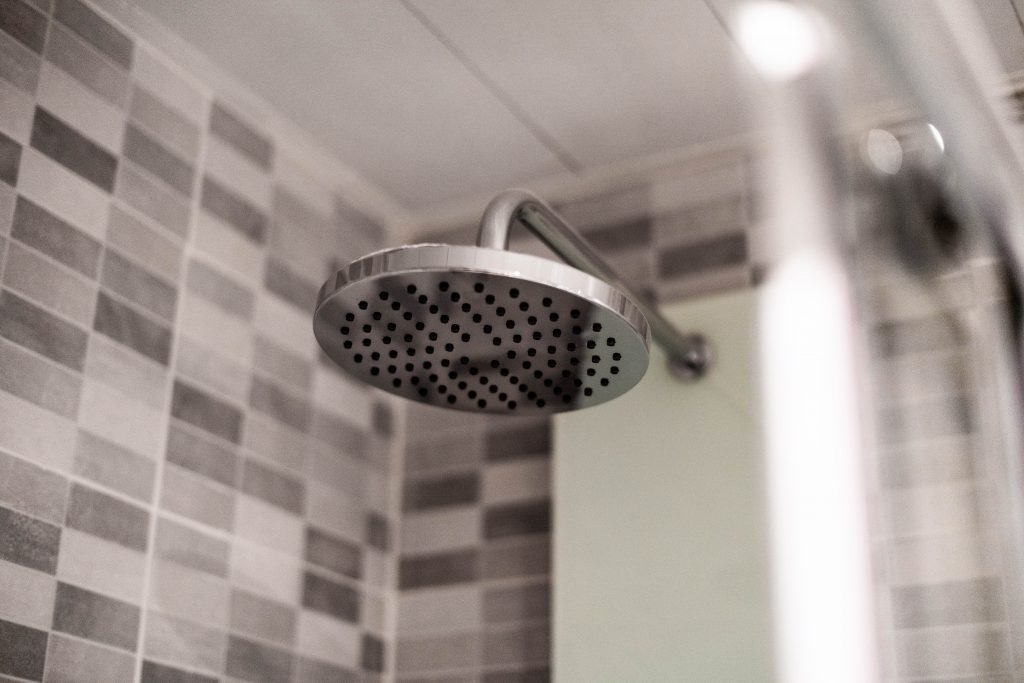
If you’re already hit, this is how you can get rid of limescale deposits from some of the most commonly infected areas like faucets, showerheads, coffee makers, tiles, and toilet bowls.
1. Faucets
Using vinegar
First, take a clean piece of cleaning cloth and dip in a container full of vinegar.
Next, carefully wrap the vinegar-drenched cloth around the faucet and use an elastic band to hold it in place. Make sure it covers the badly infected areas.
Let it sit for an hour and allow the vinegar to decompose the limescale layer.
After an hour, take a clean cloth and firmly wipe the Limescale deposits off the faucet.
Using a Homemade cleaning paste
Fill a container with one cup of water and follow it up with three tablespoons of baking powder.
Take a cleaning cloth and dip it in the solution and apply it in the same fashion as you’d apply the vinegar solution above.
2. Toilet Bowls
You need to pay special attention to the dirty ring that is popular with most toilets.
Pour 4 cups of vinegar into your toilet bowl.
Let it sit overnight and make sure nobody uses the toilet.
Wake up early in the morning and scrub then flush the dirt away.
For tough Limescale stains, use a sandpaper or pumice stone to scrub it away.
3. Bathroom tiles
Mix two cups of water and a cup of vinegar into your water sprayer.
Shake the bottle and spray over the infected areas and allow it to sit for an hour.
After an hour, scrub your tiles using a tile brush until all the Limescale is removed and rinse with clean soft water.
4. Kettles
You might have noticed a thick layer of Limescale on the inside walls of your kettle. This is how you can get rid of it:
- Mix two cups of vinegar and one cup of water inside your kettle.
- Turn on the kettle and let it run two cycles with the mixture inside.
- Pour the mixture and rinse the water with clean soft water.
- Empty and fill it again with clean soft water and run two cycles then rinse once again.
5. Showerheads
- Cut a lemon in half and rub both halves onto the showerhead one after the other.
- Allow it to sit for 30 minutes as it decomposes the Limescale layer.
- Using an old toothbrush, firmly scrub the surface until all the Limescale is removed.
- Rinse the showerhead with clean soft water.
- You can also use vinegar in the same way.
Conclusion
Limescale is a major inconvenience. Thankfully, there are ways to get rid of it for good. We hope this post has proven useful in helping you understand what limescale is and how best to deal with it.
If you’re looking to have a water softener or descaler system installed, feel free to give us a call at American Home Water and Air. We’ve been installing water softeners in Phoenix for more than 30 years.
Found this helpful? Also check out our water pressure regulators to help ensure safe operation of plumbing equipment.
Frequently Asked Questions
How do you remove limescale from a kettle?
The easiest way to dissolve limescale in a kettle is through the use of a mild acid like vinegar. Fill your kettle with a 50/50 mixture of vinegar and water. Let it sit for an hour before boiling the mixture and emptying it. Depending on how much limescale is caked on, you may need to repeat this process a few times.
How do you remove limescale from glass?
Place a mixture of equal parts water and vinegar in a spray bottle. Spray it onto your glass surface and let it sit for about an hour. Then, scrub the glass thoroughly with a mildly abrasive cloth or sponge. The limescale should come off. If it doesn’t, try again but add a bit of bleach to the mixture before spraying it on. Be sure to wear gloves.
How do you reduce limescale in water?
Your best bet for reducing limescale in water is to have a water softener installed. This is a device that treats your water at the source to remove the minerals that actually cause limescale. In addition to preventing limescale buildup on your home’s surfaces, softened water helps appliances like your dishwasher and laundry machine run more efficiently.


